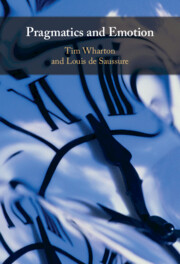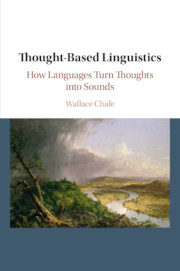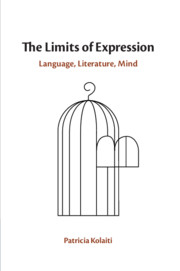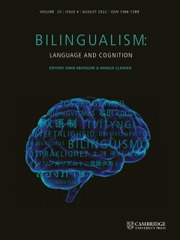Pragmatics and Emotion
It has long been received wisdom in semantics and pragmatics that 'the head' and 'the heart' are two opposing forces, a view that has led scholars, until now, to explore the mental processes behind cognition, and the mental processes behind emotion, as two separate entities. This bold, innovative book challenges this view, and provides an original study of how we communicate our emotions through language, drawing on both pragmatic theory and affective science. It begins with the assumption that emotional or expressive meaning plays such a central role in human interaction that any pragmatic theory worth its salt must account for it. It meets the associated challenges head-on and strives to integrate affect within one theory of utterance interpretation, showing that emotional meaning and rationality/reasoning can be analysed within one framework. Written in a clear and concise style, it is essential reading for anyone interested in communication and emotion.
- Presents the theory in a clear, concise way, making it accessible for readers without a background in linguistic pragmatics or affective science
- Includes interdisciplinary research stemming from collaborative work with academics from the natural sciences as well as the arts and humanities
- Offers a framework that will work for both present and future collaborative enterprises
Reviews & endorsements
'Wharton and de Saussure's Pragmatics and Emotion is a stimulating read and provides much food for thought. They convincingly argue the centrality of emotions to human experience and to language usage, despite perennial neglect throughout the history of Western philosophy. Their modifications of Relevance Theory are no doubt a welcome contribution to the field, and this book will be of interest not only to those working in linguistic pragmatics, but also those with an interest in the philosophy of language, evolutionary psychology, and the cognitive sciences more broadly.' Richard J. Whitt, John Benjamins e-Platform
Product details
December 2023Hardback
9781108835961
250 pages
235 × 155 × 15 mm
0.424kg
Available
Table of Contents
- 1. Introduction:
- 1.1 Prolegomena
- 1.2 Clocks and clouds
- 1.3 Overview
- 1.3.1 Chapter two
- 1.3.2 Chapter three
- 1.3.3 Chapter four
- 1.3.4 Chapter five
- 1.3.5 Chapter six
- 1.3.6 Chapter seven
- 1.3.7 Chapter eight. 2. Pragmatics and emotion – the challenges:
- 2.1 Introduction
- 2.2 Two challenges
- 2.2.1 Description versus expression
- 2.2.2 Propositions and ineffability
- 2.3 Pragmatics. 3. What is emotion?:
- 3.1 Introduction
- 3.2 The early history of emotion studies
- 3.2.1 Aristotle to Hume
- 3.2.2 Charles Darwin and William James
- 3.3 Affective science
- 3.3.1 Three views
- 3.3.2 Basic emotion
- 3.3.3 Constructed emotion
- 3.3.4 The view from appraisal theory. 4. From proto-pragmatics to pragmatics:
- 4.1 Introduction
- 4.2 Towards expressive meaning
- 4.3 Bally's parole
- 4.4 Speech acts: how to do things with words (and emotional expressions)
- 4.5 Alternatives. 5. Relevance theory, non–propositional content and ineffability:
- 5.1 Introduction
- 5.2 Relevance
- 5.2.1 Theory
- 5.2.2 Applications, concepts, procedures
- 5.2.3 Ineffability
- 5.3 Two notions of relevance? 6. Beyond propositions:
- 6.1 Introduction
- 6.2 Affective effects
- 6.2.1 Primary affective effects
- 6.2.2 Secondary affective effects: emotion and poetry
- 6.2.3 Affective effects and persuasion. 7. Emotion and evolution:
- 7.1 Introduction
- 7.2 Creature construction
- 7.2.1 Pirot #1: the sea-sponge
- 7.2.1 Towards a sensorium: the direct route
- 7.2.3 Pirot #2: the lizard and emotion
- 7.2.4 Humean projection: the indirect route. 8. Pragmatics and emotion – the challenges revisited:
- 8.1 Introduction
- 8.2 Two challenges
- 8.2.1 Expressing and describing
- 8.2.2 Propositions and ineffability
- 8.3 Pragmatics and emotion – closing remarks.







